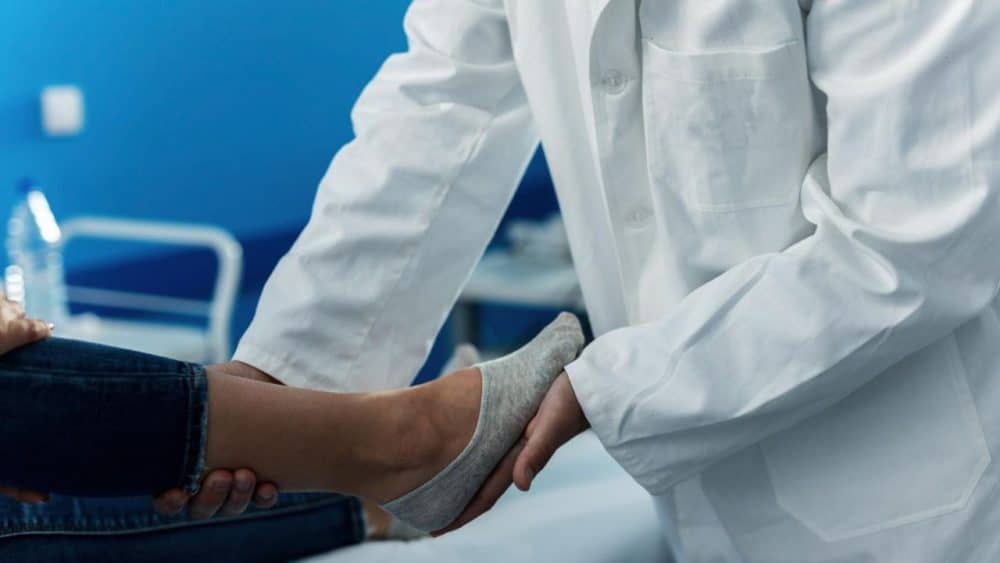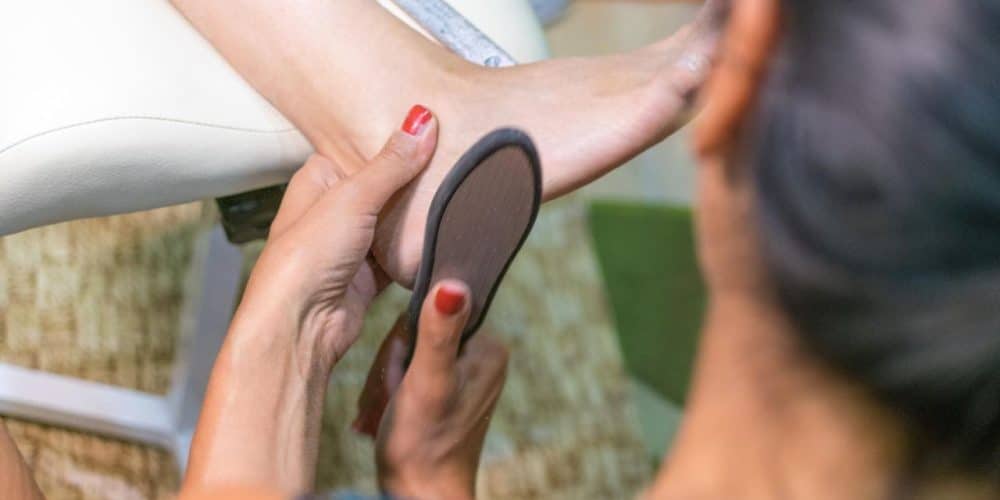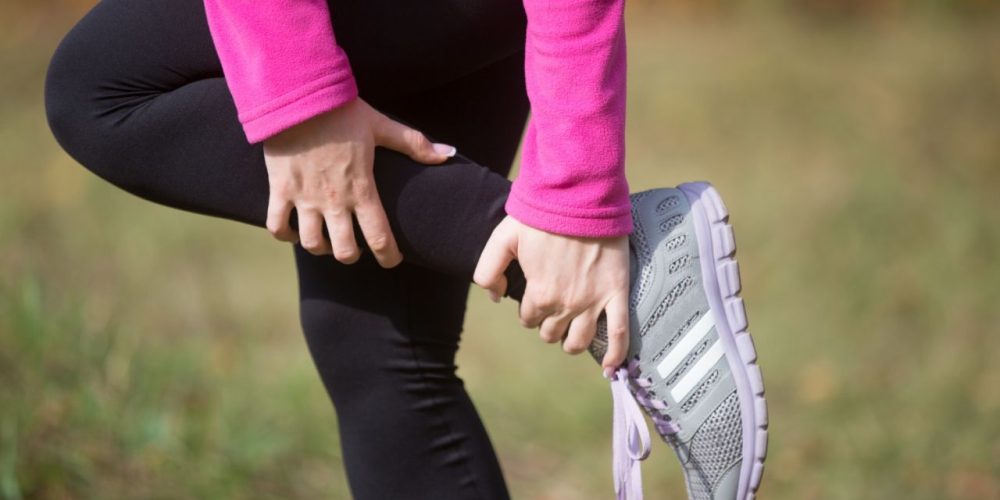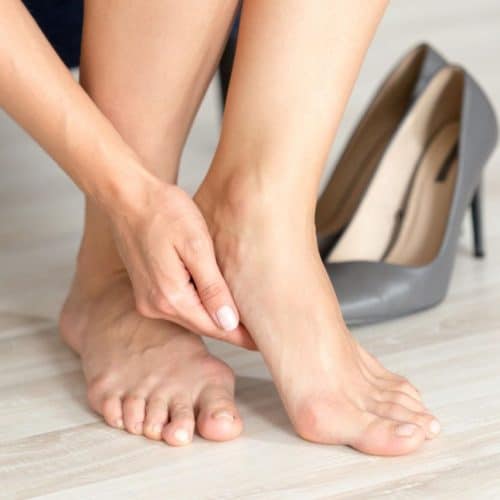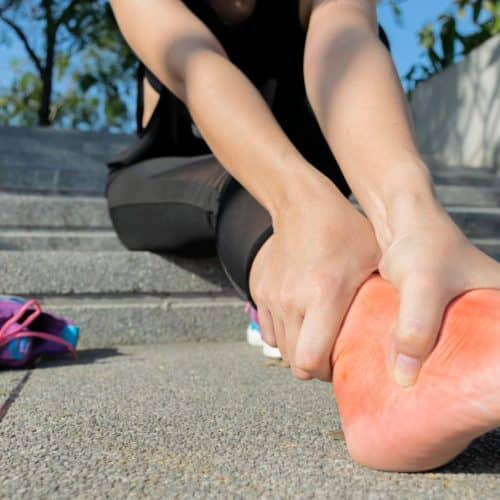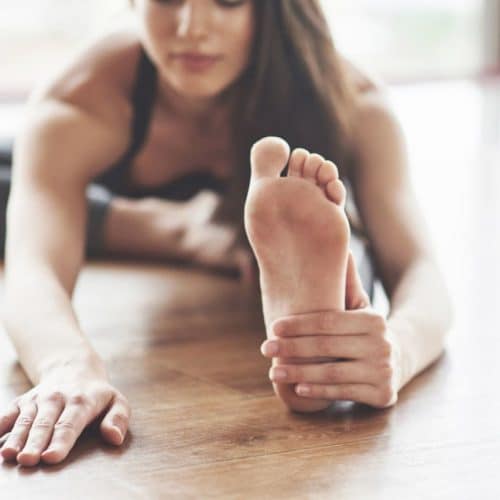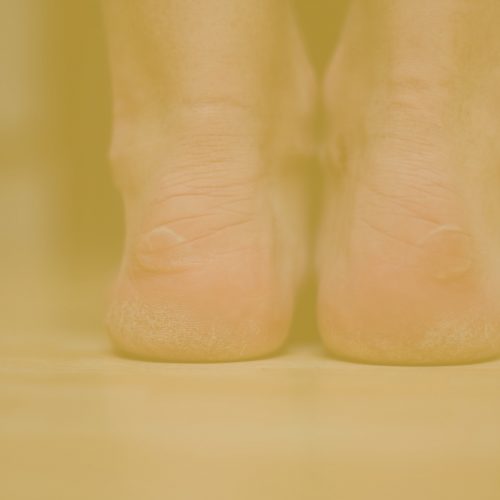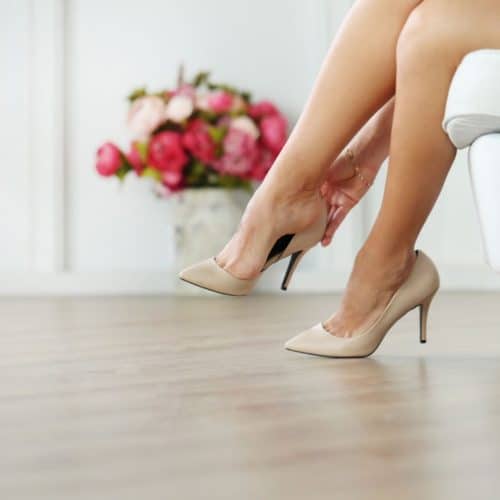Are you tired of the persistent foot pain caused by rheumatoid arthritis? Seeking relief and solutions to help you regain your mobility and comfort? Look no further! In this article, we’ll explore effective methods to alleviate foot pain caused by rheumatoid arthritis, specifically tailored for those in Australia. Whether you’re a long-time sufferer or recently diagnosed, we’ve covered you with the most helpful tips and advice.
Understanding Rheumatoid Arthritis and its Impact on the Feet
Rheumatoid arthritis (RA) is a complex autoimmune disorder affecting millions worldwide. It occurs when the body’s immune system, designed to protect against harmful invaders, mistakenly attacks healthy tissues, particularly the synovium – a thin membrane lining the joints. This attack triggers an inflammatory response that leads to chronic joint inflammation, pain, and swelling.
1. The Immune System Gone Awry
In a healthy immune system, immune cells act as the body’s defence against infections and foreign substances. However, in individuals with rheumatoid arthritis, the immune system mistakenly identifies the synovium as a threat. As a result, immune cells, particularly T cells and B cells, infiltrate the synovium and release cytokines – pro-inflammatory signalling molecules. These cytokines cause the synovium to become thickened and inflamed, eventually destroying cartilage, bone, and other joint structures.
2. Symptoms Beyond the Joints
Rheumatoid arthritis is considered a systemic disease because it can affect multiple organs and tissues throughout the body. While its primary impact is on the joints, RA can also cause systemic symptoms, including fatigue, fever, and loss of appetite. Moreover, it can lead to complications in various organs, such as the skin, eyes, lungs, heart, and blood vessels.
3. Foot Involvement in Rheumatoid Arthritis
The feet are among the most commonly affected areas in individuals with rheumatoid arthritis. The joints in the feet are small and intricate, making them susceptible to the damaging effects of inflammation. Moreover, the joints’ proximity to each other can spread inflammation from one joint to another.
4. Early Signs and Symptoms
Recognising the early signs of foot involvement in rheumatoid arthritis is crucial for early diagnosis and effective management. Individuals with RA may experience symptoms such as:
- Swelling: Inflammation can cause the joints in the feet to become swollen and tender to the touch.
- Stiffness: Morning stiffness is common, as the joints loosen up after rest.
- Foot Deformities: Over time, inflammation can lead to structural changes in the feet, such as the development of bunions, hammertoes, or claw toes.
- Painful Walking: Walking may become painful due to inflammation and joint damage.
5. Impact on Mobility and Quality of Life
The pain and stiffness associated with foot involvement in rheumatoid arthritis can severely impact an individual’s mobility and overall quality of life. Difficulty walking and performing daily activities can lead to frustration and isolation.
6. Diagnostic Challenges
Diagnosing foot involvement in rheumatoid arthritis can be challenging, as the symptoms may mimic other conditions, such as gout or osteoarthritis. However, a thorough physical examination, medical history, and imaging studies like X-rays or MRIs can aid in the diagnosis.
7. The Importance of Early Intervention
Early intervention and treatment are critical to managing rheumatoid arthritis effectively and preventing irreversible joint damage. Timely diagnosis allows healthcare practitioners to prescribe disease-modifying antirheumatic drugs (DMARDs) and other medications that can slow the progression of the disease.
Understanding how rheumatoid arthritis impacts the feet is the first step towards effective management. By seeking medical attention at the earliest signs of foot pain or discomfort, individuals can work with healthcare practitioners to develop a comprehensive treatment plan that addresses their needs and improves their overall well-being.
Managing Foot Pain in Rheumatoid Arthritis
Living with foot pain caused by rheumatoid arthritis can be challenging, but several effective strategies and treatments are available to help alleviate discomfort and improve overall foot function. Here are some essential approaches to managing foot pain associated with RA:
1. Early Diagnosis and Treatment
Early diagnosis is crucial in managing rheumatoid arthritis effectively. If you experience foot pain or notice any changes in your feet, seek medical attention promptly. A rheumatologist can conduct a comprehensive evaluation, including blood tests, imaging, and a physical examination, to confirm the diagnosis and develop a personalised treatment plan.
2. Medication Options
Medications play a significant role in managing the symptoms of rheumatoid arthritis, including foot pain. Disease-modifying antirheumatic drugs (DMARDs) are commonly prescribed to slow the progression of the disease and reduce inflammation. Additionally, nonsteroidal anti-inflammatory drugs (NSAIDs) may alleviate foot pain and swelling.
3. Physical Therapy
Engaging in regular physical therapy can be highly beneficial for individuals with rheumatoid arthritis. A physical therapist can design an exercise program tailored to your specific needs, focusing on improving joint function, increasing flexibility, and strengthening the muscles supporting the feet. Range-of-motion and stretching exercises are particularly helpful for maintaining foot mobility.
4. Orthotic Devices
Custom-made orthotic inserts by a podiatrist can significantly relieve foot pain in individuals with rheumatoid arthritis. These inserts support the feet, reduce pressure on affected joints, and improve foot alignment. They can be placed inside shoes, offering added comfort and stability during movement.
5. Proper Footwear
Choosing appropriate footwear is essential for individuals with RA. Look for shoes with good arch support, cushioning, and a wide toe box to accommodate foot deformities or swelling. Well-fitting shoes can reduce foot friction and pressure, enhancing overall comfort and mobility.
6. Hot and Cold Therapy
Applying heat or cold packs to the affected areas can help reduce inflammation and ease foot pain. Heat therapy can soothe stiff joints and relax tense muscles, while cold therapy can numb pain and reduce swelling. Alternating between hot and cold treatments can provide additional relief.
7. Rest and Elevation
When experiencing foot pain or a flare-up of RA symptoms, giving your feet ample rest is essential. Taking breaks and elevating the feet can reduce pressure and inflammation, allowing the joints to recover.
8. Lifestyle Modifications
Making certain lifestyle changes can contribute to better management of foot pain in rheumatoid arthritis:
- Maintain a Healthy Weight: Excess weight can put additional stress on the joints in the feet, exacerbating RA symptoms. Maintaining a healthy weight can help reduce strain and alleviate pain.
- Low-Impact Exercises: Participating in low-impact exercises like swimming, water aerobics, or cycling can improve cardiovascular health without putting excessive pressure on the feet.
- Stress Management: Stress can worsen inflammation and pain in individuals with RA. Incorporating stress-reduction techniques such as meditation, mindfulness, or yoga can help manage symptoms.
By incorporating these strategies into your daily routine and working closely with healthcare practitioners, you can effectively manage foot pain caused by rheumatoid arthritis.
Remember that each individual’s experience with RA is unique, so finding a personalised approach that suits your needs and enhances your overall well-being is essential.
Lifestyle Tips for Managing Foot Pain
Living with foot pain caused by rheumatoid arthritis requires a comprehensive approach that encompasses not only medical treatments but also lifestyle modifications. Incorporating certain lifestyle tips can significantly improve foot pain management and overall well-being. Here are some valuable lifestyle tips for individuals with rheumatoid arthritis:
1. Maintain a Healthy Diet
A balanced and nutritious diet is essential for overall health and can play a role in managing inflammation and reducing RA symptoms. Add plenty of fruits, vegetables, whole grains, and lean proteins to your diet. Some foods, such as fatty fish rich in omega-3 fatty acids, have anti-inflammatory properties that may be beneficial for individuals with RA.
2. Stay Physically Active
Regular physical activity is crucial for maintaining joint flexibility, muscle strength, and overall mobility. However, it’s essential to choose activities that are gentle on the feet and joints. Low-impact exercises such as swimming, water aerobics, stationary cycling, and tai chi can be excellent options to keep the body active without putting excessive stress on the feet.
3. Pay Attention to Foot Care
Practising good foot hygiene and care is essential when dealing with foot pain in rheumatoid arthritis. Keep your feet clean and dry, and moisturise regularly to prevent dry skin and cracks. Trim your toenails carefully and avoid cutting them too short to prevent ingrown toenails.
4. Foot Exercises
Specific foot exercises can help improve foot function, reduce stiffness, and enhance mobility. Toe curls, toe spreads, and ankle circles are simple exercises that can be done regularly to keep the feet flexible and strengthen the muscles supporting the joints.
5. Foot Massage and Warm Soaks
Regular foot massages and warm soaks can provide relaxation and relief from foot pain. The gentle massaging of the feet can improve circulation, reduce muscle tension, and promote a sense of well-being. Warm foot baths with Epsom salts may also help reduce inflammation and soothe achy feet.
6. Mind Your Footwear
Wearing proper footwear is crucial for individuals with RA. Invest in shoes that provide good arch support, cushioning, and a wide toe box to accommodate foot deformities or swelling. Avoid high heels and shoes with inadequate support, as they can worsen foot pain and instability.
7. Consider Assistive Devices
If necessary, consider using assistive devices such as walking aids or shoe inserts to reduce pressure on the feet and improve mobility. A podiatrist or physical therapist can recommend suitable devices based on your specific needs.
8. Pace Yourself
Listen to your body and pace yourself during daily activities. Avoid overexertion and take breaks to prevent excessive strain on the feet. Learning to balance activity and rest can help manage foot pain and prevent flare-ups.
9. Maintain a Healthy Weight
Excess weight can put additional stress on the joints, including those in the feet. Maintaining a healthy weight through a balanced diet and regular exercise can reduce the burden on the feet and alleviate foot pain.
10. Manage Stress
Stress can exacerbate RA symptoms, including foot pain. Practice stress management techniques such as meditation, deep breathing, or engaging in hobbies that promote relaxation and mental well-being.
By incorporating these lifestyle tips into your daily routine, you can effectively manage foot pain caused by rheumatoid arthritis and improve your overall quality of life. Working closely with healthcare practitioners to tailor a comprehensive treatment plan that addresses your individual needs and preferences is essential. Remember that managing RA is a journey; finding the right combination of lifestyle adjustments and medical interventions can lead to better foot health and enhanced overall wellness.
What to Expect at Your First Podiatry Visit
1. Discussion of Symptoms and Concerns
Your first podiatry visit will typically begin with a discussion of your symptoms and concerns. The podiatrist will ask detailed questions about the nature of your foot pain, such as the location, intensity, and any specific triggers or aggravating factors. They will also inquire about your medical history, including previous foot injuries, surgeries, or chronic conditions like rheumatoid arthritis. Openly communicating your symptoms and medical history will help the podiatrist better understand your situation and make an accurate diagnosis.
2. Physical Examination
A comprehensive physical examination of your feet and ankles is fundamental to your first podiatry visit. The podiatrist will carefully examine the affected areas, assess your foot alignment, joint mobility, and look for any visible signs of inflammation or deformities. They may also observe your gait to identify any abnormalities in the way you walk or distribute weight on your feet. This examination provides crucial information about your foot health and aids in formulating an appropriate treatment plan.
3. Range of Motion and Strength Assessment
As part of the examination, the podiatrist will evaluate the range of motion and strength in your feet and ankles. This assessment helps determine any limitations or weaknesses contributing to your foot pain. Understanding your foot’s biomechanics and functionality is essential for diagnosing conditions accurately and tailoring treatment to your individual needs.
4. Diagnostic Imaging
In some cases, the podiatrist may require additional diagnostic imaging, such as X-rays, MRI, or ultrasound, to gain a more detailed view of the internal structures of your feet. These images can reveal any bone abnormalities, joint damage, or soft tissue issues that may not be visible during the physical examination. Diagnostic imaging is crucial in confirming a diagnosis and guiding appropriate treatment decisions.
5. Diagnosis and Treatment Plan
Once the podiatrist has gathered all the necessary information, they will discuss their findings with you. You will receive a diagnosis based on the examination and any relevant test results. If you have rheumatoid arthritis, the podiatrist will consider how it affects your feet and design a treatment plan accordingly. The treatment plan may involve a combination of medical interventions, physical therapy, lifestyle adjustments, and self-care techniques to manage foot pain effectively.
6. Footwear and Orthotic Recommendations
Your podiatrist may evaluate your current footwear and provide recommendations for appropriate shoes that can offer better support and cushioning and accommodate any foot deformities or inflammation. In some cases, they may suggest custom-made orthotic devices to improve foot alignment and alleviate pressure on certain areas.
7. Education and Prevention
Part of the podiatrist’s role is to educate you about your foot condition and provide guidance on managing foot pain at home. They will share self-care techniques, exercises, and lifestyle modifications that can improve foot function and reduce discomfort. Additionally, they may offer tips for preventing further foot problems and promoting overall foot health.
8. Follow-Up and Continued Care
Your first podiatry visit is not just a one-time event. Depending on your specific condition and treatment plan, the podiatrist may schedule follow-up visits to track your progress and adjust the treatment as needed. Regular check-ups allow them to monitor improvements, address new concerns, and provide ongoing support for your foot health.
9. Collaboration with Other Healthcare Practitioners
If you have other medical conditions, such as rheumatoid arthritis, that may impact your foot health, the podiatrist will collaborate with your primary care physician or rheumatologist to ensure coordinated care. This collaborative approach ensures that all aspects of your health are considered and integrated into the treatment plan.
Your first podiatry visit is an essential step in addressing foot pain and promoting foot health. By actively participating in the evaluation process and following the treatment plan, you can work towards better foot function, reduced pain, and improved quality of life. Building a strong patient-podiatrist relationship can lead to successful long-term management of foot pain and help you maintain optimal foot health throughout your life.
Conclusion
In conclusion, if you or someone you know is struggling with foot pain caused by Rheumatoid Arthritis (RA), there are effective strategies to find relief and improve your quality of life. RA is a chronic autoimmune disease that primarily affects the joints, including those in the feet. The pain, stiffness, and inflammation in the feet can significantly impact daily activities and overall well-being.
Now, we’d love to hear from you! What methods have you found most effective in relieving foot pain caused by Rheumatoid Arthritis? Share your experiences and insights in the comments below to help others find relief and support each other in their journey to conquer RA foot pain. Together, we can empower and inspire one another to live a more comfortable and fulfilling life despite the challenges of Rheumatoid Arthritis.
Remember, always consult your healthcare practitioner before making any changes to your treatment plan. Your input might make a world of difference to someone in need!
Content Summary
- In a nutshell, managing rheumatoid arthritis-related foot pain is crucial for enhancing your overall quality of life.
- By understanding the root causes and incorporating these techniques into your daily routine, you can experience a significant reduction in foot discomfort, allowing you to lead a more active and pain-free lifestyle.
- Rheumatoid arthritis (RA) is a complex autoimmune disorder affecting millions worldwide.
- However, in individuals with rheumatoid arthritis, the immune system mistakenly identifies the synovium as a threat.
- The feet are among the most commonly affected areas in individuals with rheumatoid arthritis.
- Recognising the early signs of foot involvement in rheumatoid arthritis is crucial for early diagnosis and effective management.
- The pain and stiffness associated with foot involvement in rheumatoid arthritis can severely impact an individual’s mobility and overall quality of life.
- Early intervention and treatment are critical to managing rheumatoid arthritis effectively and preventing irreversible joint damage.
- Timely diagnosis allows healthcare practitioners to prescribe disease-modifying antirheumatic drugs (DMARDs) and other medications that can slow the progression of the disease.
- Understanding how rheumatoid arthritis impacts the feet is the first step towards effective management.
- By seeking medical attention at the earliest signs of foot pain or discomfort, individuals can work with healthcare practitioners to develop a comprehensive treatment plan that addresses their needs and improves their overall well-being.
- Early diagnosis is crucial in managing rheumatoid arthritis effectively.
- If you experience foot pain or notice any changes in your feet, seek medical attention promptly.
- A rheumatologist can conduct a comprehensive evaluation, including blood tests, imaging, and a physical examination, to confirm the diagnosis and develop a personalised treatment plan.
- Medications play a significant role in managing the symptoms of rheumatoid arthritis, including foot pain.
- Engaging in regular physical therapy can be highly beneficial for individuals with rheumatoid arthritis.
- Custom-made orthotic inserts can significantly relieve foot pain in individuals with rheumatoid arthritis.
- Applying heat or cold packs to the affected areas can help reduce inflammation and ease foot pain.
- Alternating between hot and cold treatments can provide additional relief.
- When experiencing foot pain or a flare-up of RA symptoms, giving your feet ample rest is essential.
- Stress can worsen inflammation and pain in individuals with RA.
- Incorporating stress-reduction techniques such as meditation, mindfulness, or yoga can help manage symptoms.
- By incorporating these strategies into your daily routine and working closely with healthcare practitioners, you can effectively manage foot pain caused by rheumatoid arthritis.
- Living with foot pain caused by rheumatoid arthritis requires a comprehensive approach that encompasses not only medical treatments but also lifestyle modifications.
- Incorporating certain lifestyle tips can significantly improve foot pain management and overall well-being.
- A balanced and nutritious diet is essential for overall health and can play a role in managing inflammation and reducing RA symptoms.
- Practising good foot hygiene and care is essential when dealing with foot pain in rheumatoid arthritis.
- Wearing proper footwear is crucial for individuals with RA.
- If necessary, consider using assistive devices such as walking aids or shoe inserts to reduce pressure on the feet and improve mobility.
- Listen to your body and pace yourself during daily activities.
- Learning to balance activity and rest can help manage foot pain and prevent flare-ups.
- Excess weight can put additional stress on the joints, including those in the feet.
- Maintaining a healthy weight through a balanced diet and regular exercise can reduce the burden on the feet and alleviate foot pain.
- Stress can exacerbate RA symptoms, including foot pain.
- Practice stress management techniques such as meditation, deep breathing, or engaging in hobbies that promote relaxation and mental well-being.
- By incorporating these lifestyle tips into your daily routine, you can effectively manage foot pain caused by rheumatoid arthritis and improve your overall quality of life.
- Working closely with healthcare practitioners to tailor a comprehensive treatment plan that addresses your individual needs and preferences is essential.
- Remember that managing RA is a journey; finding the right combination of lifestyle adjustments and medical interventions can lead to better foot health and enhanced overall wellness.
- Your first podiatry visit will typically begin with a discussion of your symptoms and concerns.
- A comprehensive physical examination of your feet and ankles is fundamental to your first podiatry visit.
- The podiatrist will carefully examine the affected areas, assess your foot alignment, joint mobility, and look for any visible signs of inflammation or deformities.
- This examination provides crucial information about your foot health and aids in formulating an appropriate treatment plan.
- Range of Motion and Strength Assessment
- As part of the examination, the podiatrist will evaluate the range of motion and strength in your feet and ankles.
- Diagnostic imaging is crucial in confirming a diagnosis and guiding appropriate treatment decisions.
- Once the podiatrist has gathered all the necessary information, they will discuss their findings with you.
- If you have rheumatoid arthritis, the podiatrist will consider how it affects your feet and design a treatment plan accordingly.
- Your first podiatry visit is not just a one-time event.
- Depending on your specific condition and treatment plan, the podiatrist may schedule follow-up visits to track your progress and adjust the treatment as needed.
- If you have other medical conditions, such as rheumatoid arthritis, that may impact your foot health, the podiatrist will collaborate with your primary care physician or rheumatologist to ensure coordinated care.
- Your first podiatry visit is an essential step in addressing foot pain and promoting foot health.
- By actively participating in the evaluation process and following the treatment plan, you can work towards better foot function, reduced pain, and improved quality of life.
- Building a strong patient-podiatrist relationship can lead to successful long-term management of foot pain and help you maintain optimal foot health throughout your life.
- In conclusion, if you or someone you know is struggling with foot pain caused by Rheumatoid Arthritis (RA), there are effective strategies to find relief and improve your quality of life.
- RA is a chronic autoimmune disease that primarily affects the joints, including those in the feet.
- Remember, always consult your healthcare practitioners before making any changes to your treatment plan.
FAQs
1. Can rheumatoid arthritis affect other joints apart from the feet?
Yes, rheumatoid arthritis can affect other joints, including the hands, wrists, knees, and shoulders.
2. Is rheumatoid arthritis hereditary?
While genetics may play a role, the exact cause of rheumatoid arthritis is still not fully understood.
3. Can I exercise with foot pain from rheumatoid arthritis?
Low-impact exercises are generally safe and beneficial for individuals with foot pain due to rheumatoid arthritis.
4. Are there alternative therapies for managing foot pain in RA?
Some people find relief with alternative therapies like acupuncture or massage, but it’s essential to consult a healthcare practitioner before trying them.
5. How can I improve my sleep quality with foot pain from RA?
Using pillows to elevate the feet while sleeping can reduce swelling and discomfort, thus improving sleep quality.


